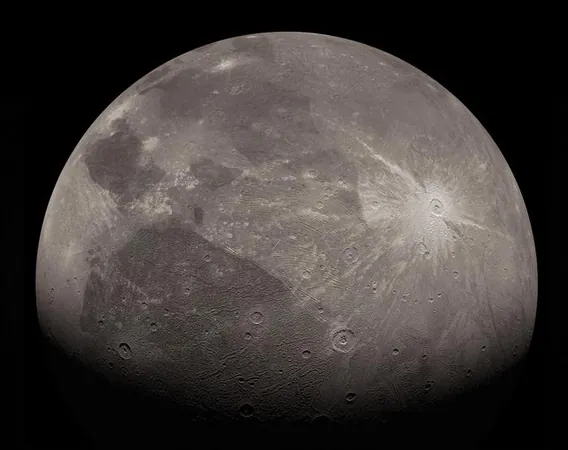
Revolutionary Discovery: What ‘Space Ice’ Reveals About Our Universe
2025-07-08
Author: William
Groundbreaking Insights Into Space Ice's Structure
In an astonishing breakthrough, researchers from UCL and the University of Cambridge have unveiled that the much-debated 'space ice' is not the chaotic concoction of molecules scientists once believed. Unlike the crystalline ice found here on Earth, space ice defies previous assumptions of being entirely disordered—revealing an intricate world of tiny crystals embedded within it.
The Cosmic Fabric of Ice Unraveled
For years, scientists assumed that low-density amorphous ice, the dominant ice form found in comets and icy moons, was completely amorphous due to the chill of outer space. However, groundbreaking computer simulations indicated that these icy formations contain minuscule crystals measuring about three nanometers wide—just slightly broader than a strand of DNA. This revelation changes our understanding of how such ice forms in the cosmos.
How Origins Shape the Structure of Space Ice
Experimental studies led by Dr. Michael Davies focused on recrystallizing real samples of amorphous ice. The team's results showcased that the final crystal structure varies significantly depending on the ice's origin. If ice freezes into a fully disordered state, it sheds any prior structural memory, leading to fascinating implications for its cosmic journey.
Implications for the Origins of Life
This research doesn't just scratch the surface of ice studies; it dives into the very origins of life on Earth. A theory called Panspermia posits that life’s building blocks may have been transported to Earth via icy comets. However, the latest findings suggest that if space ice contains crystallized structures, it may be less effective as a transport medium for these essential molecules.
Unveiling the Mysteries of Amorphous Materials
Co-author Professor Christoph Salzmann shed light on the intriguing differences between Earth ice and space ice. He emphasized that while the ordered structures like those seen in snowflakes are fascinating, the disordered arrangement of space ice tells a more complex story than previously understood.
Future Research Avenues
This study opens up a plethora of questions regarding amorphous solids. Do crystal sizes vary based on their formation process? Is a truly amorphous ice possible at all? These inquiries could have far-reaching implications, not just in cosmology but also in advanced technologies relying on amorphous materials.
The Journey of Ice Through Time
First discovered in the 1930s and only recently explored for medium-density forms, amorphous ice is becoming a hot topic in scientific discussions. This medium-density ice was found to share the same density as liquid water, making it incredibly unique.
Conclusion: The Enigma of Water Continues
Professor Angelos Michaelides firmly states that while water is the essence of life, mysteries still linger around it. This exploration into amorphous ices may well hold the key to unlocking some of water’s many perplexities.









 Brasil (PT)
Brasil (PT)
 Canada (EN)
Canada (EN)
 Chile (ES)
Chile (ES)
 Česko (CS)
Česko (CS)
 대한민국 (KO)
대한민국 (KO)
 España (ES)
España (ES)
 France (FR)
France (FR)
 Hong Kong (EN)
Hong Kong (EN)
 Italia (IT)
Italia (IT)
 日本 (JA)
日本 (JA)
 Magyarország (HU)
Magyarország (HU)
 Norge (NO)
Norge (NO)
 Polska (PL)
Polska (PL)
 Schweiz (DE)
Schweiz (DE)
 Singapore (EN)
Singapore (EN)
 Sverige (SV)
Sverige (SV)
 Suomi (FI)
Suomi (FI)
 Türkiye (TR)
Türkiye (TR)
 الإمارات العربية المتحدة (AR)
الإمارات العربية المتحدة (AR)